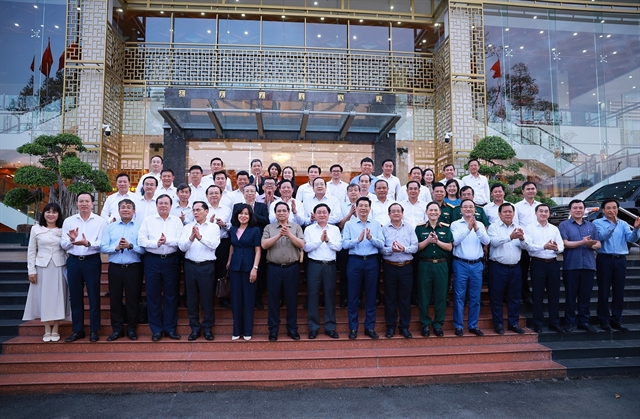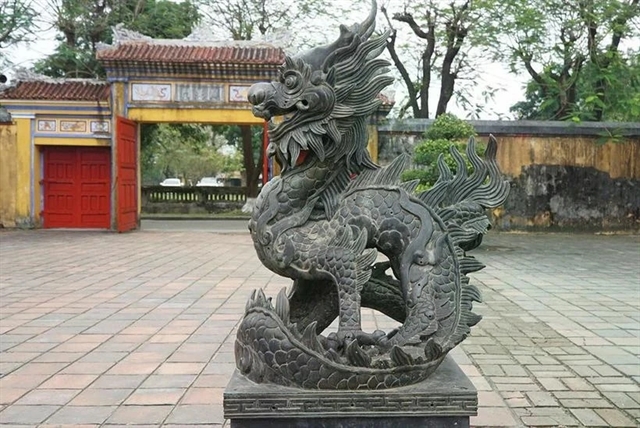 Life & Style
Life & Style

 |
| Dragon statue from the Emperor Thiệu Trị (1841-1847) period placed in front of the Duyệt Thị Đường theatre, Huế Imperial City. — Photo courtesy of the Ministry of Culture, Sports and Tourism |
HÀ NỘI — Deputy Prime Minister Lê Thành Long has recently signed a decision recognising an additional 33 artifacts as national treasures.
The newly-recognised national treasures include the Đắk Sơn lithophone dating back about 3,500 - 3,000 years ago; a ceramic pot belonging to the Đông Sơn culture (about 2,500 - 2,000 years ago); the Vũ Bản bronze drum, also belonging to the Đông Sơn culture (3rd - 2nd century BC); two Đông Sơn bronze drums dating back the 3rd - 2nd century BC; and a Đông Sơn bronze jar dating back the 3rd – 1st century BC.
Also enlisted were a Lai Nghi gold jewelry collection dating from the 3rd century BC to the mid-1st century; a Lai Nghi animal-shaped agate bead from the same era; a Long Giao pangolin bronze statue from the 1st - 2nd century; and the head of a Linh Sơn Bắc Buddha statue dating from the 1st - 3rd century.
The national treasure title was also given to the Gò Cây Trâm tomb dating from the 4th-5th century; the Bắc Bình Avalokitesvara statue dating from the 8th - 9th century; the Phong Lệ dancing Shiva relief dating from the 10th century; and the Chánh Lộ Uma relief from the 11th century, among others.
The Deputy Prime Minister requested the Minister of Culture, Sports and Tourism, the Chairpersons of People's Committees at all levels, the ministers, and the heads of ministerial-level agencies and organisations assigned to manage the national treasures within their powers to perform their tasks in accordance with the provisions of the Law on Cultural Heritage.
According to the law, national treasures are bequeathed objects with extremely precious, rare and typical values in terms of history, culture and/or science. They are original and have a unique appearance, with special value related to a significant event of the country or the career of a national hero or an outstanding figure.
They also include works of art famous for their ideological, humane, or aesthetic values typical for a trend, a style, or an era. An outstanding invented product that has high practical value and promotes social development in a certain historical period can make this list, as well as natural items demonstrating the formation and development of the earth or nature. — VNA/VNS




